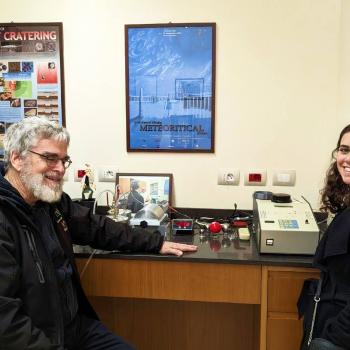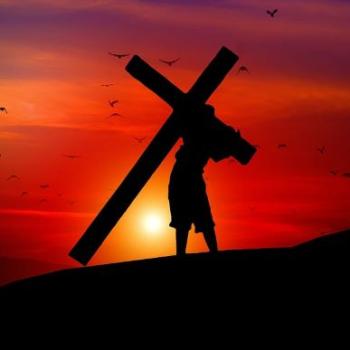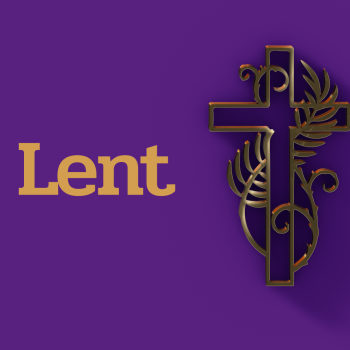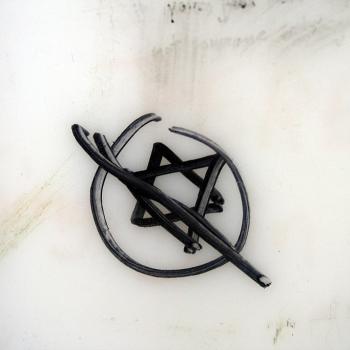By Elena Procario-Foley - May 12 2009
On a recent bike hike, I was struck by the utter diversity of the natural world surrounding me, including that of my fellow cyclists. My senses were surfeit with an explosion of spring color, scent, and sound. The experience recalled to me the theology of Edward Schillebeeckx who, in Church: The Human Story of God, opines that there is no salvation outside of creation. Creation and salvation are synchronic divine actions not to be separated. To aver that the material, sensible world mediates both creation and salvation is deeply Catholic. Material mediation of the divine provides the basis of the Catholic sacramental system.
As Pope Benedict XVI travels through the Holy Land, he, too, will experience a feast for his senses. Any first time visitor to the Holy Land cannot but be overwhelmed by a multi-lingual, multi-religious context demarcated by ancient beauty and pox-marked by violence and war. A visitor walking down a block in Jerusalem's Old City marvels at the co-existence of a contemporary consumer-driven world amidst different peoples struggling to maintain traditional lifestyles. Yet Pope Benedict is not just any pilgrim to the Holy Land. As pastor of the world's Roman Catholics, his flock expects him to make sense of the deep diversity that he experiences there and to provide guidance on its religious and social problems. Catholics can use the sacramental principle of the material mediation of creation and salvation as an interpretive lens through which to view the Pope's visit to the Holy Land.
The Pope will contend with his diverse roles as pilgrim, pastor, and statesman as he traverses sites sacred to Jews, Christians, and Muslims. Benedict is the third pontiff to visit Israel. Pope Paul VI visited in 1964 before promulgating Nostra Aetate which launched Catholicism into dialogue with other religions, particularly Judaism. Pope Paul's visit, however, was conducted in stealth fashion almost completely as a pilgrim and not as a head of state. He never mentioned Israel as a sovereign nation (this was before the 1994 Fundamental Agreement) and he visited Christian sites. Pope John Paul II was welcomed in 2000 as pilgrim, pastor, and statesman by Israeli dignitaries during a climate when there was hope for a two-state solution to the Israeli-Palestinian conflict. The context of his visit had been firmly established by his teaching that repentance is at the heart of a Jubilee pilgrimage. The iconic images from his visits to Yad Vashem and the Western Wall remain indelible markers of the durability of a renewed relationship between Judaism and Christianity. By contrast, Benedict visits at a time of war when two-state solutions are in jeopardy, elements of the Fundamental Agreement are disputed, the Christian presence in the Holy Land is diminishing, and Muslims and Jews are angered over a variety of his speeches and actions.
So Catholics in the Holy Land will be looking to their pastor for words of solace; for a signal that their presence matters in the land that birthed Christianity. Jews and Muslims will be looking for clear statements about the intrinsic holiness of their religions. Everyone will listen for the Pope's interpretation of the relationship between Catholicism and other religions.
Benedict does not have the luxury of circumstance, as did Paul VI, to travel as pilgrim only. Nor does Benedict have the goodwill born from a long pontificate replete with stellar relations toward Judaism and acts of interreligious exchange with other religions as did John Paul II. Rather, Benedict has to navigate rocky conditions created by: complex relations among various Roman rite and Eastern rite Catholics, Orthodox Christians, and Protestant Christians in the Holy Land; the Israeli-Palestinian conflict; diplomatic issues between Israel and the Vatican; theological issues raised by overtures to the Society of St. Pius X and the wider use of the Tridentine rite; and the continuing efforts of the Vatican to repair relations with the Muslim community in the wake of his address at Regensburg.
Diversity of nations, ethnic groups, language groups, religions, and attitudes toward Pope Benedict XVI add up to a visit fraught with opportunity and dangers. If the pope approaches his difficult journey via the language of sacramental mediation, he has the opportunity to allay accumulated nervous mistrust. Using the language of his tradition, he can affirm the intense diversity of the region and its peoples. He can witness to the Dome of the Rock, the Western Wall, the Church of the Holy Sepulchre as an axis mundi for each tradition, a mediation of divine holiness for each religion. If Catholics truly believe that God creates each human being in God's image, then diversity of any sort cannot be explained away as a result of sin. Such an explanation is a facile reading of the arc of salvation history from Babel to Pentecost. On the grounds of sacramental mediation, Pope Benedict can demonstrate that Catholics can embrace the diverse religions of the Holy Land with a welcome as cheering as the embrace of a new spring. If Benedict draws the world into the mystery that creation is salvation, that creation is revealed through God's many and diverse peoples, then his trip will be successful.
Elena Procario-Foley is Driscoll Professor of Jewish-Catholic Studies and Chair of the Department of Religious Studies at Iona College.
1/1/2000 5:00:00 AM




